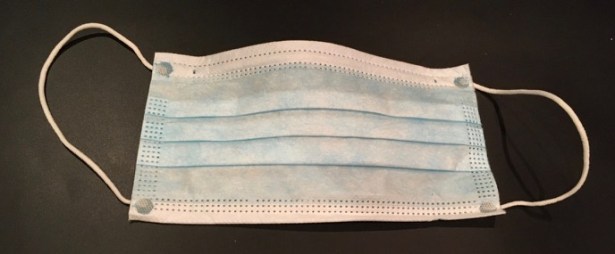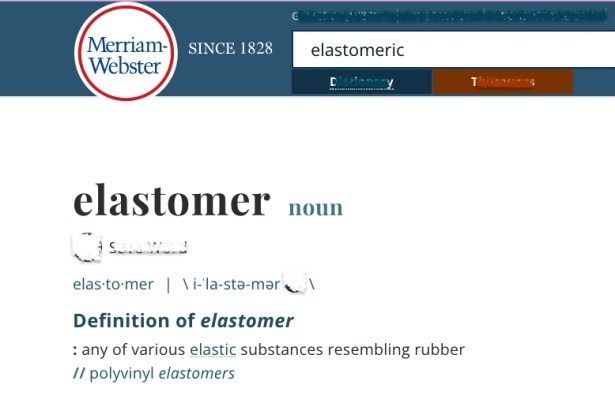My personal evaluation of three consumer grade elastomeric respirators is available further down in this post: Breathe99 B2, FLO Mask, and ZShield Reveal.
As of July 2022, many people claim to be “over COVID;” I’m not one of them. I continue to mask regularly. I cover my face to protect a high risk member of my household, and because I have enough uncomfortable health issues of my own already. The specter of long COVID looms large enough to make indoor masking my preference.
Long COVID is most common in middle aged people, affecting as many as one in four recovered patients according to a Nature news feature. The CDC gives me better odds than 25% in their Data for Long COVID section, but, the fact is, no one yet knows the true prevalence of the condition.
Long term, I see no reason to ever stop masking in crowded conditions such as boarding a flight or on mass transit, though my specific level of vigilance will probably vary as this pandemic wanes and flu season comes and goes.
The particular genesis of today’s post was a New York Times article by Andrew Jacobs published July 3, 2022. It’s worth reading, but the gist is that American hospitals should have learned the supply chain lesson of the COVID-19 pandemic and switched to elastomeric respirators for essential healthcare workers by now.
Elastomeric respirators are reusable face coverings using replaceable filter elements that work as well as disposable N95s to block the flow of germs. Many are domestically produced, to boot, in marked contrast to the largely imported supply of disposable masks.
Widespread adoption of elastomeric respirators would solve the problem of being dependent upon a hostile foreign nation for vital supplies while offering equal or better protection to each wearer with a better fit and simultaneously creating less waste.
Win-win-win.
The “elastomeric” part of the elastomeric respirator just means the body of the filtering face mask in question is stretchy or otherwise like rubber.
If the NYT article is to be believed, elastomeric respirators are often judged more comfortable by the wearer than N95s. Disposable filters are still required, but they might require only annual replacement for a few dollars, while the main body of the device—composed of washable silicone—should last a decade at a one time cost of $15-40 each.
For about two thirds of the money spent by the Trump administration attempting to sterilize and re-use N95s, we could have outfitted each of the nation’s 18 million health care workers with an elastomeric respirator according to Nicolas Smit as quoted in Jacobs’ article.
Or, to harp on the affordability point from a different angle, a paper published in the Journal of the American College of Surgeons showed: “Outfitting… workers [with elastomeric respirators] was one-tenth as expensive than supplying them with disposable N95s. A separate study found that after one year, the filters were still 99 percent effective.”
And, given the chance to switch back to N95s after the study period in question, none of the employees opted to do so. I take that to mean those healthcare workers found the alternative masks easier to wear or use.
Toward the end of the New York Times piece was a mention of just one particular small business that’s giving up in the face of the healthcare system’s irrational insistence on sticking with disposable, imported masks. Breathe99—whose elastomeric respirator made the cover of Time magazine in 2020 as an innovation prize-winner—is winding down operations at the company’s Minnesota plant.
I followed the link, and found that I could purchase Breathe99’s B2 mask at retail as of early July 2022. Since I still see daily death reports in my newspaper, I remain in the market for comfortable, effective face coverings. I decided to resume exploration of better Personal Protective Equipment (P.P.E.), hoping I can reduce waste while staying safe.
I don’t buy disposable water bottles or accept single use plastic cutlery when I get takeout food, so why should I continue to rely upon paper face masks when more comfortable, equally effective alternatives exist?
One caveat: there are officially approved elastomeric respirators for clinical use, but consumer grade options are unlikely to be officially NIOSH approved. Whether this is due to pandemic backlogs or if it is just a regulatory grey area, I’m not informed enough to say. Just be aware that we still have no official designation for effective, FDA-approved consumer grade face coverings.
Now that mask mandates have ended and masking is a voluntary, personal choice in most settings, the up side to all of that reckless abandon is that no one is likely to complain about any specific face covering I acquire or wear. There should be no push back† to the lack of an official protection rating for any mask I select.
On the down side, I’m left having to hope these products actually work as designed, and as represented by their manufacturers. I’m “doing my own research” here because I have no choice if I want a comfortable, well-fitting, effective face covering. I do go all the way to published papers from scientific journals and material spec sheets whenever possible.
For example, here’s a USA Today fact checking story about why filter media with a physical pore size of around 0.3 micron can be quite efficient at stopping SARS-CoV-2 viral particles which are themselves closer to 0.1 micron.
One clear takeaway of the past couple of years is that any mask offers better protection from airborne viruses than a bare face does. I do feel confident that I won’t end up worse off than I would be wearing a cloth mask or an ill-fitting surgical one when I don a tight-sealing face covering utilizing an effective filter medium at the point(s) where all my breath enters or exits the device.

This improvised face covering was my first attempt at masking when the idea was introduced to the general public in 2020. This loose, single layer of fabric is obviously not protective in the way a fitted non-woven medical mask would be, but I crafted it for passing strangers on walks around my neighborhood, so, in hindsight, I wasn’t at high risk when I wore it.
I will compare and contrast three intriguing designs that I’ve purchased at retail and tested for myself for the reader’s convenience. Because these elastomeric products are relatively expensive—from $60 to 90 per starter kit—I hope my comparison will help others pick a useful style.
Because of the note of doom sounded by the NYT article that sent me down this path, I advise anyone picking up one of these expensive face coverings to stock up on specialized, custom fit filters while they are still available. We as a society seem to have learned very little from the deprivations and death wrought by COVID-19. Even top quality, well designed products may be dropped from the market if their makers go out of business.
I ordered three different face coverings direct via their manufacturer’s web sites, paying the stated retail price. Here’s the list including the July 2022 list price:
- B2 mask by Breathe99 as referenced in the NYT article ($59.99)
- FLO Mask for adults or children though I’m only testing the adult version ($89.99)
- ZShield Reveal rigid mask which I pre-ordered and got in 2021 ($89.99)
